With apologies to Red Sox fans, it would be easy to paraphrase the late, great Yankees catcher/philosopher Yogi Berra to describe the year 2021: déjà vu all over again. When the curtain rose in January, Covid-19 cases on Martha’s Vineyard were on the rise. As the curtain descended this week, the numbers were hitting records again, with the Omicron variant looming large.
Testing sites were busy, home test kits were in short supply and Island health officials were scrambling to get as many booster shots into arms as possible. A life-saving sequence of vaccines meant circumstances were quite different than a year ago. But as in 2020, the virus had seeped into virtually every corner of life on the Vineyard — schools, jobs, health care, night life, home life — and into the collective Island psyche.
But a glance back shows the year was much more than the peaks and valleys of virus infection rates. And the outlook had changed. Parents heaved a collective sigh of relief as children returned to school with new safety protocols in place. Summer business roared back to life after a year of shuttered storefronts and economic uncertainty. Milestone anniversaries were celebrated. New normals were becoming a way of life, and Islanders tackled them all with characteristic resilience.
Still, broader issues loomed as the Vineyard confronted pivotal questions about its carrying capacity and solving the Rubik’s cube of accommodating reasonable growth and affordable housing, while preserving the Island’s fragile ecosystem and way of life. The balancing act appeared to grow more precarious. Community leaders and others were asking: how many people, cars and development can the Vineyard absorb? And is an Island on the front lines of climate change prepared to deal with its rapidly eroding shorelines and increasingly destructive storms?
•
Results from the decennial census revealed that the year-round population grew by nearly 25 per cent to 20,600 people, and reflected a more diverse population. A look at the school population showed one strand of the diversity: English language learners (ELL) jumped nearly sixfold in the last decade, now comprising 19 per cent of students in the public schools. The predominant language among those students is Brazilian Portuguese.
Affordable and available housing became more scarce than at any time in recent memory — and increasingly out of reach for many. A Martha’s Vineyard Commission report released early in the year found that homelessness had climbed, rents had risen and the affordability gap — the difference between median sales prices and what the average family can afford — had widened.
The unfolding housing crisis sparked an energetic new initiative to create a housing bank for the Island modeled on the Martha’s Vineyard Land Bank, which uses a two per cent transfer fee on real estate transactions to buy conservation land. The housing bank idea is not new, but has never made it past the state legislature.
By December an advocacy group called the Coalition to Create the Martha’s Vineyard Housing Bank was lobbying hard to get a draft proposal on the spring annual town meeting warrants. Tisbury, Chilmark and Aquinnah had agreed, while Edgartown, West Tisbury and Oak Bluffs became engaged in debating the details, postponing a final decision until January.
Meanwhile, the red hot real estate market grew white hot.
In late November available data showed that the Vineyard had already broken last year’s record-breaking numbers. The average sale price of a single-family home was just over $2 million, while the median price was $1.2 million. Homes were selling for 156 per cent of assessed value and 97 per cent of asking price. Inventory was drying up.
Even seasoned analysts and professionals were baffled by the trends.
“The key word is unprecedented — no other word fits the situation,” Martha’s Vineyard Land Bank executive director James Lengyel told the Gazette. The land bank alone was on track to collect nearly $25 million for the calendar year, breaking last year’s record of around $21 million.
•
From Memorial Day to Labor Day, visitors streamed off the ferries in Vineyard Haven and Oak Bluffs, bringing new life to the Island business community. It came not a moment too soon; earlier in the year, downtowns were virtual ghost towns. But even then, retailers, restaurateurs and victualers exhibited typical optimism. “We’re going to be eating beans and rice for a year, but we’ll be fine,” said Larkin Stallings, owner of The Ritz, a Circuit avenue mainstay in Oak Bluffs.
As vaccinations rates rose and Covid cases receded, Gov. Charlie Baker removed restrictions for Memorial Day weekend. The spigot opened, and by summer’s end some businesses reported that 2021 was one of their best years ever. “It was very good,” said Melissa Scammell, owner of the Rainy Day gift boutique in Vineyard Haven. “Better than pre-pandemic.”
It came at some cost. For many, summer labor shortages made worse by the pandemic meant shorter hours and reduced service. By Labor Day, a collective exhaustion had set in.
Summer events and fundraisers, a staple of the Island in July and August, were no longer virtual but in the open air, held under tents and some even indoors. The annual Agricultural Fair re turned to the West Tisbury fairgrounds. At the Possible Dreams Auction, late night host Seth Meyers bantered with a limited number of people, including Ted Danson, instead of cracking wise over Zoom in 2020.
Island performers took to the stage for the first time in two years, including regional high school bands and choirs, the Minnesingers and the Community Chorus. Libraries reopened their doors to patrons, instead of delivering books curbside. The Martha’s Vineyard Sharks were on the ballfield again, and came close to winning a championship.
And although programs were shortened and group sizes limited, the joyful sounds of Jabberwocky campers and volunteers were back after a two-year absence. Even the Chilmark Road Race resumed its normal event, with all runners racing together.
On Sunday mornings at Beetlebung Corner in Chilmark, in-person kneel-in vigils resumed to honor and remember people of color victimized by police violence. In October a first-of-its-kind outdoor forum was held in recognition of Indigenous Peoples Day. Part celebration, part reckoning, the moving event attracted hundreds of people.
•
The Steamship Authority is a perennial target for the slings and arrows of disgruntled travelers and Woods Hole residents tired of truck traffic rumbling down their road to the ferry terminal. Add to that cost overruns for a new Woods Hole terminal that had everyone grumbling.
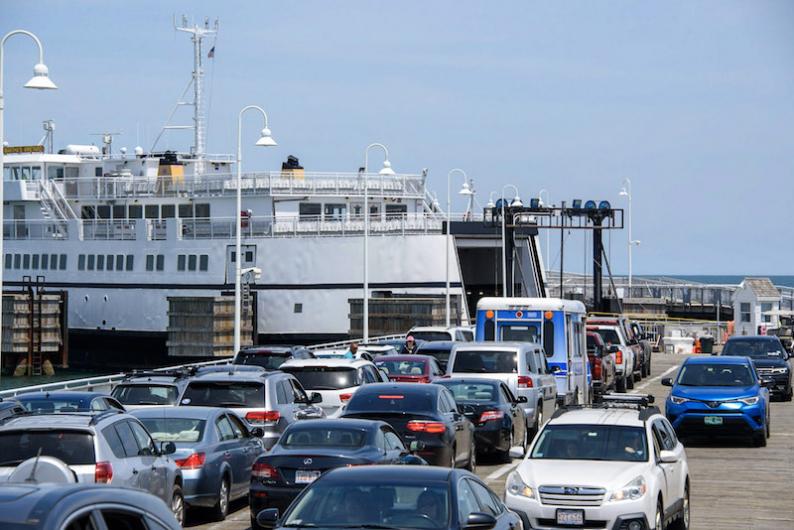
But this year, the ferry line that is the Island lifeline was attacked from a new direction: cyber-criminals.
In June, the SSA’s communications and IT systems were hit by a ransomware attack, crippling its website and online reservation system for 10 days. The boat line was forced to pause reservations, issue paper tickets and request cash payments.
Federal and state agencies launched a criminal investigation. Boat line managers were tight-lipped about the cyber attack, but eventually confirmed that no ransom had been paid.
Perhaps remarkably, throughout the crisis ferries ran mostly on time.
•
Concerns about protecting the Vineyard environment grew more acute. Saltwater ponds were under pressure, with toxic cyanobacteria blooms cropping up for a second year in some of the Great Ponds. For the first time, the town of Edgartown banned anchoring in most of Cape Pogue Pond, a pristine shellfish haven, after a flood of recreational boats had begun to ply the bay’s waters, many from Cape Cod on summer weekends.
Wastewater treatment systems in Edgartown, Oak Bluffs and Tisbury were at or near capacity. “There’s a real debate about the sewering question,” Ben Robinson, who sits on the Martha’s Vineyard Commission and worked on a grant to fund a carrying capacity study, told the Gazette in August. “Who gets the sewer flow — does it go to development or nitrogen mitigation? Wastewater flow is like gold now. More valuable than gold.”
In late October a ferocious northeaster battered the Island, knocking out power for days in some places. Preparedness in the face of rising seas was no longer an academic discussion.
In Edgartown, a $4 million project got under way to rebuild and raise the historic Memorial Wharf on the Edgartown harbor.
Combating the effects of climate change was declared a top priority by the commission, and a task force was launched to develop a yearlong plan for the Island towns.
The race to develop wind farms off the coast of Massachusetts saw a key win with the approval by the federal government of Vineyard Wind, the nation’s first commercial-scale offshore wind farm, planned for an area 15 miles south of the Vineyard.
In a related project, the MVC approved a massive plan to redevelop the Tisbury Marine Terminal as a maintenance staging area for the offshore wind farm.
The environmental debate grew long tentacles. The MVC weighed the pros and cons of artificial turf on the high school playing fields for months on end, before voting narrowly to approve it. But by year end, concerns about PFAS chemicals and their impact on the environment dominated an Oak Bluffs board of health meeting, which was considering a regulation that could knock out the $7 million artificial turf project.
Open space preservation saw modest gains and significant investment. The Martha’s Vineyard Land Bank acquired about seven acres near Lambert’s Cove Beach, enough to double the size of James Pond Preserve. And it acquired 32 acres of Red Gate Farm in Aquinnah for $10 million, adding to 304 acres jointly purchased with Sheriff’s Meadow Foundation from the family of Caroline Kennedy and Edwin Schlossberg. The ecologically rare acreage includes Atlantic-facing coastal dunes, wetlands, hillocks and heathlands between Moshup Trail and Squibnocket Pond.
•
Two respected Vineyard nonprofits became embroiled in controversy. The Sheriff’s Meadow Foundation was cited by the state Natural Heritage and Endangered Species Program for an aggressive and unauthorized trail cutting in the Manuel F. Correllus State Forest, spearheaded by one of the conservation group’s board members. In June, the foundation agreed to a five-year plan that will close and restore most of the 25 miles of single track trails — including through priority endangered species habitat — that were cut without the proper permits from the state Department of Conservation and Recreation and Natural Heritage.
In the same month the Vineyard Trust, the nonprofit that owns and manages 20 historic buildings around the Island, found itself in the middle of a scandal that ultimately prompted a change in leadership and a move toward promised transparency.
Executive director Funi Burdick resigned after the discovery of altered applications for public funding for two of its flagship properties: the Old Whaling Church and the Flying Horses Carousel. A criminal investigation was launched but later dropped. The Trust’s troubles did not end there. Among other things, for the first time in recent memory, Alley’s General Store, the famed Dealers in Almost Everything in the heart of the West Tisbury village, stayed shuttered all summer.
By the end of the year, the Trust had hired a new executive director, Nevette Previd, an Island business owner and community event organizer. As part of the reboot, the organization changed its name to Vineyard Preservation Trust.
Ms. Previd quickly generated community good will, announcing soon after she took the helm that the trust would sign a long-term lease with the Martha’s Vineyard Film Festival for use of the second floor of the Grange Hall in West Tisbury. Headed by Islander Brian Ditchfield, the nonprofit educational film festival had been searching for a home for years.
•
The Island’s first residents, the Wampanoag Tribe of Gay Head (Aquinnah), hit another legal roadblock when a federal appeals court forbade it from building its electronic bingo parlor near its headquarters without local permits. But tribal leaders pivoted, and wrote Gov. Charlie Baker asking for a full-fledged Class III gaming license.
•
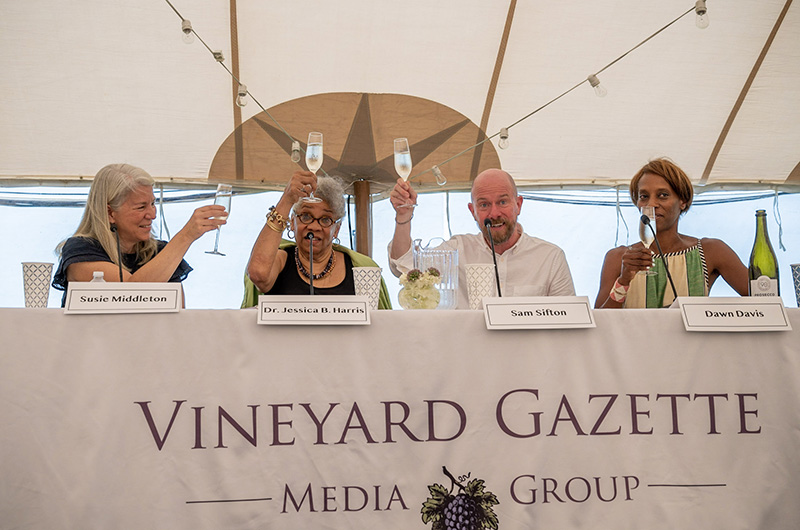
There were signature anniversary celebrations and ribbon cuttings.
The Vineyard Gazette marked its 175th year as a trusted community newspaper with sold-out summer events and an exhibit at the Martha’s Vineyard Museum that opened in May and ran through October.
The towns of Tisbury and Edgartown turned 350 years young. The summer basketball league at Niantic Park in Oak Bluffs marked its 50th year, as did the Field Gallery in West Tisbury.
The Martha’s Vineyard Charter School celebrated its 25th anniversary, and Christmas in Edgartown marked its 40th year with a joyful return of the annual parade. Martha’s Vineyard Community Services cut the ribbon on a new $8.1 million Early Childhood Center and quietly launched phase two of an ambitious $18 million capital campaign to overhaul its Oak Bluffs campus.
•
The year was marred by tragedies and loss.
In August Hannah Malany Iozzo of West Brookfield, age 20, was killed and her friend seriously injured when their moped crossed the center line on South Road in Chilmark and struck an oncoming vehicle. The haunting fatality spurred a renewed effort to ban rental mopeds in Oak Bluffs, and three months later town voters approved a home rule petition at a special town meeting to send to the state legislature.
Two other tragic accidents, both apparent drownings, shocked the Island. In July, a three-year-old boy was pulled from a pool at the Field Club in Edgartown, and later succumbed at a Boston hospital. And in September, a Virginia man died after he was caught in a rip current off Quansoo.
The Island mourned the death of a number of people who made an indelible imprint on the Vineyard and Vineyarders. Among them were Arnie Reisman of Vineyard Haven, a journalist, poet, playwright, humorist and Gazette columnist; June Manning, the unofficial ambassador for her town and the Aquinnah tribe who was a longtime Gazette columnist; Vernon Jordan, the civil rights icon, Washington power broker and friend to the Island; Herb Foster, the garrulous World War II veteran, linguist, author and longtime Edgartown library trustee; Sean Murphy, civic leader, lawyer and town moderator for Edgartown; Kent Healy, West Tisbury select board member and civil engineer; Laurence A. Mercier, former longtime Edgartown businessman and town official; John Hughes, the noted researcher and former longtime head of the state lobster hatchery in Oak Bluffs; and Peter Herrmann, longtime commander of VFW Post 9261 and longtime advocate for Vineyard veterans.
•
There were victories and moments of recognition.
The long, tortuous path to a new Tisbury School took a dramatic turn when voters finally approved a new $55 million plan by a landslide at town meeting and the ballot box. “It’s been a long time coming, and a lot of effort and a lot of work,” said school committee chairman Amy Houghton, describing the compromise and dialogue that led to the result. “And that is what I hope this shows — that coming together as a community is what we need to do.”
The Island also recognized its stars and stalwarts: Capt. Robert Douglas, the legendary wooden boat builder, designer and captain of the schooner Shenandoah, received the Creative Living Award from the Martha’s Vineyard Community Foundation; Alison Shaw, who has been photographing the Vineyard and its waters since the 1970s, was honored by Sail Martha’s Vineyard with the prestigious Walter Cronkite award; and Nancy Vietor, Richard Burt and the late Vernon Jordan were honored with Martha’s Vineyard Museum Medals for their commitment to preserving the history, arts and culture of the Island.
•
Of course examples of everyday Islanders who gave hope or inspiration during the past year were never in short supply — from health care workers to first responders to service employees and public officials who served without fanfare.

People like Marina Lent, the Chilmark health agent who has been at ground zero of the pandemic, among other things co-coordinating the Island’s contact tracing program with nurse Betsy VanLandingham.
Or people like Joe Capobianco and his lieutenant Janay Dlabaj, arriving at the Good Shepherd Parish center in the predawn hours on the first and third Saturdays of each month, leading a team preparing and distributing boxes of food for the hungry.
Yet another example of déjà vu all over again: Islanders helping Islanders, year after year.


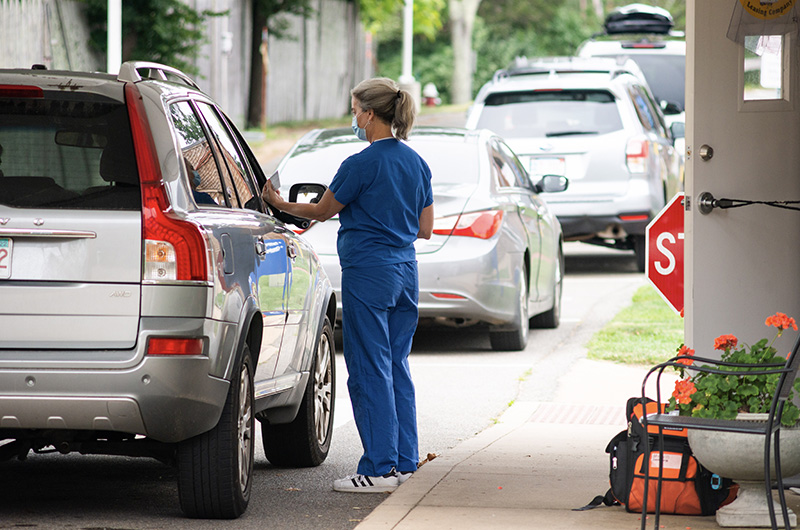
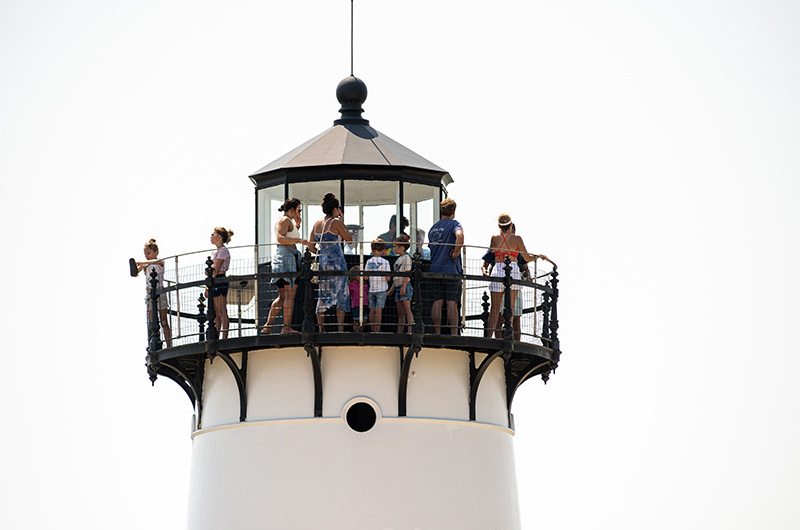


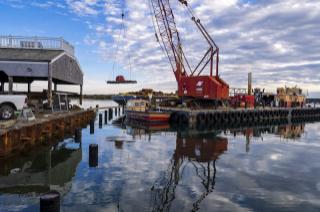







Comments (3)
Comments
Comment policy »